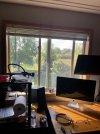You would. Like I said: internel or external is the same. Everything though the OS mixer gets resampled to the rate it it set to, no matter if the DAC is internal or external. Obviously, if an audio source is already at the correct rate, no resampling is needed.If you feed the external DAC via the windows mixer wouldn’t you suffer the same sampling conversion issues?
Does it? How do you bypass the windows mixer in Chrome? Looks like you can enable exclusive mode via a flag: --enable-exclusive-audio. Chances are high it will indeed switch sample rate this way. But it’s by no means default behavior. Good to know that it’s even possible though.When I bypass the Windows Mixer for Chrome browser and play Apple Music tracks, using their Web Player, the external DAC matches the differing sample rate and depth of the tracks.
That’s just how you’ve set it up. Some might like other setups.However, system sounds will be heard from the PC sound output. No mixing is involved as it should be. No one wants system beeps from their Hi-Fi would they?
Remember: I just explained why an OS has a mixer with a fixed sample rate. I’m not advocating using it for highest quality audio playback.
Last edited:

